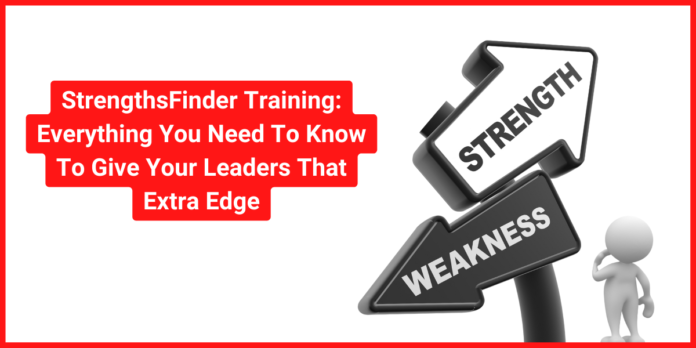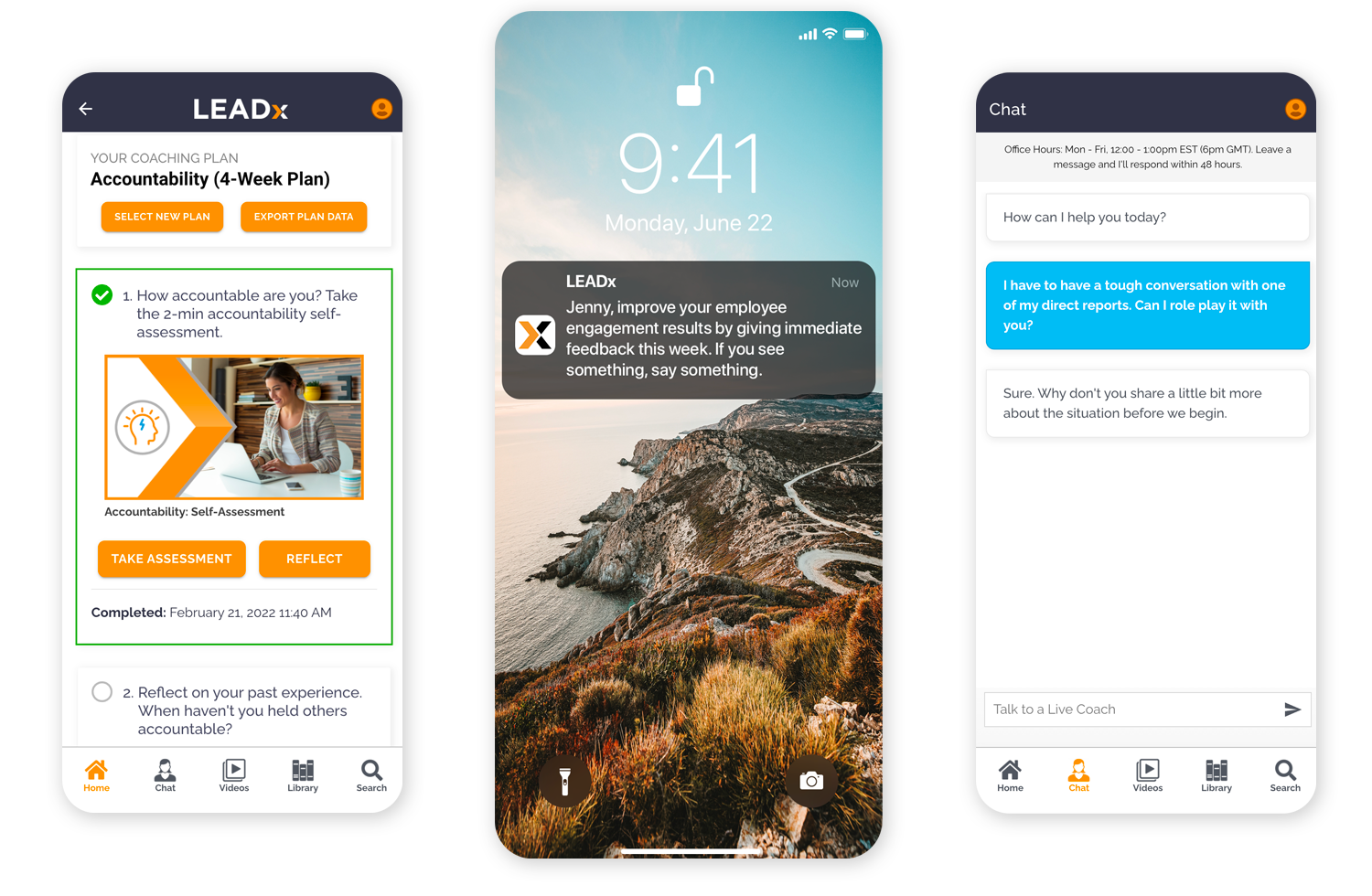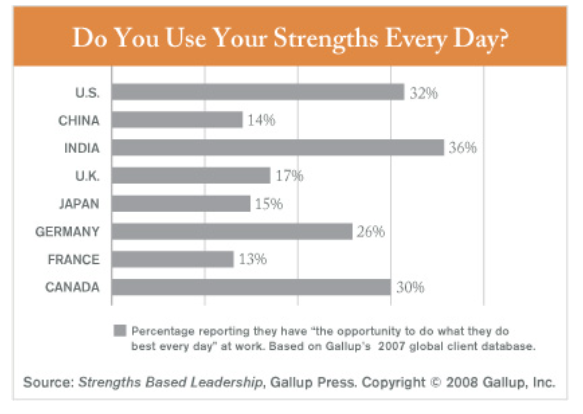
StrengthsFinder Training: Everything You Need To Know To Give Your Leaders That Extra Edge
StrengthsFinder training is a powerful way to keep leaders and their teams fulfilled and engaged. Estimates by Gallup indicate up to six times more engagement from employees who leverage their strengths at work.
Strengths training helps leaders perform their job better, build relationships, delegate, influence, collaborate, and think strategically. It’s also a much more approachable and fun training than many programs that try to chip away at weaknesses.
What Is Strengthsfinder Training?
Donald Clifton invented the StrengthsFinder assessment and began to develop strengths-based training at Gallup in 1998 with Tom Rath and a team of psychologists. Since then, their book StrengthsFinder 2.0 has sold over 5 million copies and is the only book to ever make the Amazon top 10 list every year for over a decade.
Now, strengths-based training is one of the most popular ways to train leaders. A Google search for “strength training” yields 404 million results. Gallup’s StrengthsFinder is used by 1.6 million employees per year, and 467 Fortune 500 companies. As this Harvard Business Review article points out, strengths have even become so popular that people shy away from using the word “weakness” in training—leaning on euphemisms like “areas for improvement,” “opportunities,” and “challenges.”
So what exactly is strength-based training? It’s about assessing your strengths, understanding what they mean, then learning how to apply them on the job and in your life. It’s also about learning how to apply your strengths without overdoing them or being unaware of how they come across to others.
Who Is StrengthsFinder Training for?
The short answer: Anyone who wants to lead a more fulfilling life and career. Despite all the benefits of leveraging strengths, Gallup research still shows that the vast majority of people around the world say they don’t use their strengths on a daily basis.
 5 Key Components of a Good StrengthsFinder Training
5 Key Components of a Good StrengthsFinder Training
Whether you’re looking to get certified to train StrengthsFinder, to bring in an external program, or to build your own custom program, here are five key components of a successful StrengthsFinder training.
A Strengths Assessment. A psychological assessment will highlight the strengths and weaknesses of your leaders, giving them insights into how to work in a style that will give them the most results and the most energy. An assessment is essential for participants to get past blind spots, insecurities, or overconfidence to see what their strengths really are. Here are three of the best strengths assessments.
The assessment made to pair with StrengthsFinder training is the CliftonStrengths ( originally called StrengthsFinder). The CliftonStrengths assessment is 177 questions and $50 to get a full report of your top strengths as well as where you land on each of the 34 strengths.
Another option, other than StrengthsFinder, is the VIA Character Strengths. VIA breaks strengths down into 24 characteristics. For $50, their report details where you fall on each characteristic and what your top five strengths are.
A third option, the Strength Deployment Inventory (SDI 2.0), covers not only your strengths but also your Relationship Intelligence (or RQ). It’s about how you tend to interact and why. This assessment breaks out 28 specific strengths and what happens when they’re overdone. It also breaks down your motives toward people and maps out how your motives tend to change in conflict.
Debrief and Reflection. Regardless of which assessment you go with, a good strengths-based training program should help you debrief, reflect, and make sense of your strengths report. It should give you a chance to understand what your results mean and what key takeaways you can glean. The reflection process should also help you devise a plan for how you want your report to inform your behavior moving forward. Debriefs typically include takeaways like how to strengthen your strength, how to make sure you don’t overdo your strength, and how your strength may impact your interactions with others.
Understanding of ALL Strengths. An in-depth assessment report and session will typically get into or give you access to all the strengths, not just your top five. This is especially important for leaders so that they can leverage strength types not only for their own performance, but also to cultivate the strengths of the people reporting to them.
Application-focused. Instead of living in the realm of theory and ideas, the training should show leaders how to act on what they’ve learned. How can they take what they learned about their strengths and the strengths of others, and begin to apply their learning on the job? At LEADx, we operate under a 3-to-1 model. For every one formal learning objective, we facilitate three on-the-job exercises.
Nudges. “Use nudges. Consider working with organizational psychologists to design nudges (encouraging reminders) that prompt learning. Design tests to find out which nudges are most effective.” Dr. Serena Huang, Head of People Analytics at Paypal
The LinkedIn 2022 Learning Report noted how employees increasingly want daily, flexible learning opportunities. Nudges are a natural response. Nudges can help remind learners to apply past learnings and how to do so, or they can provide quick follow-up learnings that help make key ideas stick. When it comes to strengths, nudges can remind people of specific strategies to maximize their strengths as well as specific strategies to avoid overdoing their strengths.


6 Benefits of StrengthsFinder Training
Boosts Engagement. The book StrengthsFinder 2.0 cites research showing that people who have the opportunity to focus on their strengths are six times more likely to be engaged and three times more likely to report having an excellent quality of life. What’s more, managers who actively focus on the strengths of their employees are much more likely to engage them (1% disengagement rate) compared to managers who ignore employees (40% disengagement rate) or focus on weaknesses (22% disengagement rate).
Helps People See Blind Spots. Research shows we are poor evaluators of ourselves. We often don’t see our own strengths for what they are. At the same time, we tend to have an inflated sense of our abilities (research shows this is especially true of leaders). Taking an assessment and debriefing that assessment in a training program is a powerful way to see past your biases to learn what your strengths are. Equipped with this knowledge, you can much more easily begin to understand how to use your strengths to your advantage.
Helps People Build on Personality Assessments to Get a More Holistic Picture. Personality is an effective starting point for leaders seeking to understand themselves and their tendencies, but it should be built upon with a good strengths profile. A strengths profile gives you a sense for the themes of talent that you naturally possess and gravitate toward. Paired with a personality assessment, you can get a very full picture of your natural tendencies—good, bad, and neutral.
Here’s an example from Deltek of pairing a personality assessment with strengths.
Helps Build Self-Awareness. Awareness of your strengths is essential as a leader. Without it, you may become a pale imitation of other leaders, struggle to inspire or motivate the people around you, and struggle to motivate yourself. Strengths drive you, motivate you, and explain the why behind how you tend to act. As a leader, self-awareness of your strengths equates to knowing when you should step in and use your strengths, as well as when you should delegate something that you know isn’t your strength.
Feels Good and Is Fun. Strengths training feels good because it’s the path of least resistance. So much of learning and education throughout our lives is about learning to become proficient at something that doesn’t come naturally to us. Strengths training is a positive, feel-good training because it shows you what you naturally tend to do and want to do, and how that can become your greatest asset.
Helps Guide People to Be Appropriately Cautious with Strengths. One of the greatest critiques of strengths-based training is that over-emphasizing a strength can actually lessen its power. Confidence can become arrogance. Conscientiousness can become crippling perfectionism. Training can help people understand how to leverage their strengths without going too far. Training can also help people recognize how their strengths might get in their way at times or clash with people who don’t share the same strengths. For example, Achievers are people who are so motivated to achieve that they wake up feeling as if they’re already behind on everything they want to accomplish that day. These are the people who tend to outwork everyone around them. They drive success on tight deadlines and tackle big workloads. BUT, their achievement can get in the way if they expect the same from others or don’t take the time to practice self-care (leading to burnout). Good training will help people be proactive about these potential problems so they can leverage their strengths and mitigate the side effects.
Giving Your Leaders That Extra Edge
Topics like self-awareness, inspiration, team motivation, and engagement, can be difficult to evaluate and train. But, training leaders in strengths will influence all of these topics and do so in an actionable and inspiring way. Ultimately, strengths training is a powerful way to keep employees around for a long time.



 5 Key Components of a Good StrengthsFinder Training
5 Key Components of a Good StrengthsFinder Training 


